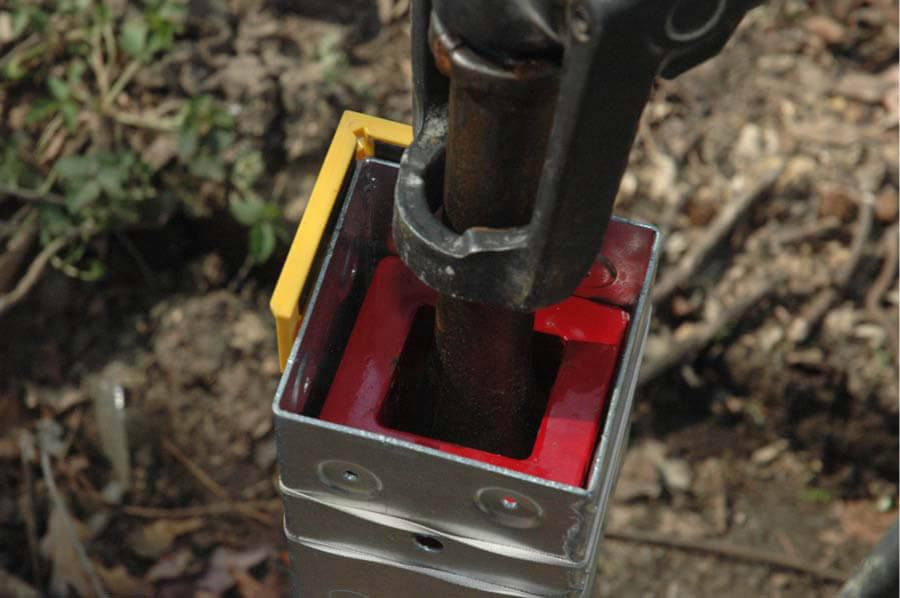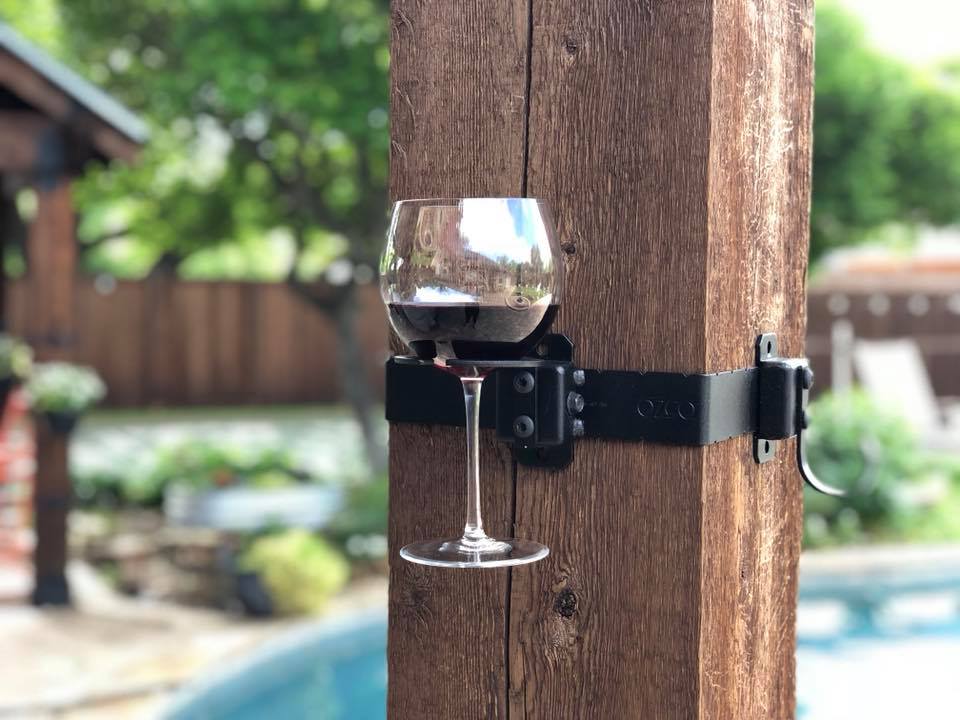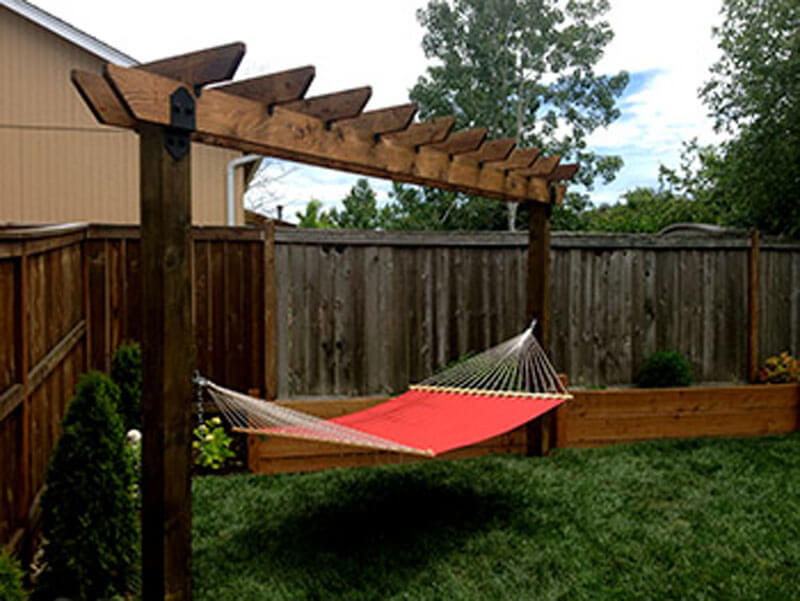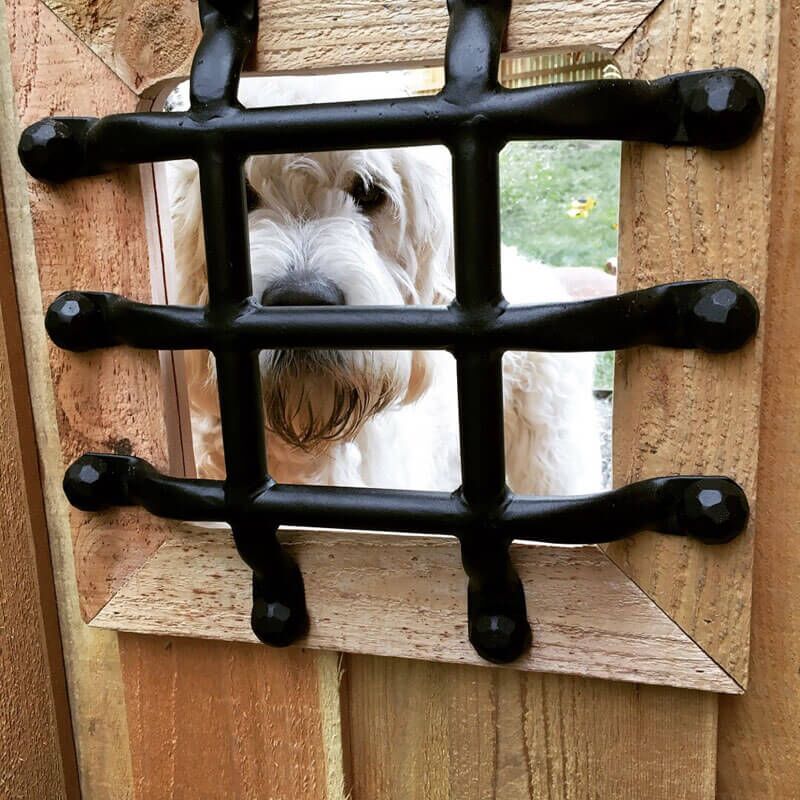Arbors over Gates Turn Backyards into Hidden Sanctuaries
When I was in the Marines, a crimson signpost of two upright columns topped with a crossbar was a frequent sight. Usually, the unit’s sign and the names of its officers and senior non-commissioned officers swung from chains below the crossbar. It wasn’t until I was stationed in Okinawa that I learned where this came from. It’s called a torii, and it’s a type of gate used to mark the entrance to Shinto shrines in Japan. The military had taken a liking to the look of these and had begun using them wherever possible.
The ones outside unit headquarters caused me dread, usually because I only saw them when I was in trouble. The traditional ones, though, seemed like a lovely way to mark an entrance. When I finally bought my own home, I looked for a similar way to mark the entrance to my private sanctum. The idea that I hit upon was to build arbors over the gates to my backyard. They would lend a similar elegance to the threshold, and, hopefully, a similar feeling of leaving your worldly troubles behind as you cross through.
Choosing an Arbor Style
Arbors come in a wide variety of sizes and styles, and there are of course larger, wider arbors that are freestanding and meant to provide shade in a yard. The ones that inspired me, though, are much narrower and are not really meant to provide shade. Instead, they’re a gateway that provides a symbolic transition. The large toriis in Japan are freestanding, and mark the transition from a busy area of worldly concerns to the tranquility of the divine. However, mine will be standing in a suburban neighborhood where kids tend to cut across yards. It’s probably best if this arbor is paired with an actual gate and a fence which will create both a symbolic and a literal marker of transition. Once you’ve decided to pair your arbor with a gate, though, you still have a few basic styles to decide between.
Simple, two-post arbors are the most like toriis and do nothing more useful than nicely accent a gate. Their function is mostly symbolic, and they highlight the transition into a private area. The nice thing about these is that since they technically cannot be roofed over, they escape code requirements for being able to support a roof, giving anyone building them more free reign over rafter spacing and other considerations.
Arbors intended for growing flowers and vines need a little bit more substance, but it doesn’t have to be a lot more. Walking through a gate beneath one can be a wonderful experience of colors and sweet smells. If their main purpose is to support plants, they should have at least two posts with trellises between them.
Arbors that provide almost a tunnel through greenery for those passing through the gate can really drive the ‘outside to inside’ transition home. These kinds of arbors also serve the function of providing shade or shelter from rain around a home’s entry. If they’re long and wide enough, they might even provide a place to put a bench.
The nice thing about arbors, no matter what style they are, is that they’re simple structures and their design can easily be adjusted to suit your fence, the layout of your yard, and your personal needs and taste.
How to Build Arbors over Gates
The starting place for building an arbor over a gate in a wooden fence is simple. You simply leave the posts that you hang the gate from longer than the rest. These posts don’t have to be very high; you can go as low as seven feet above ground level. However, if you’re working with a traditional wooden privacy fence of six feet in height, this might be low enough that it looks odd, and worse, the cross braces might actually interfere with the gate itself. I suggest leaving two to three feet of post above the maximum height of your fence in order to allow plenty of room for the gate beneath to swing, for people to walk underneath, and to create a suitable sense of gravitas for the entrance to your private retreat.
When it comes to topping these posts, there are a variety of options. After all, the fence posts you’ll most likely be working with are four-by-four posts, and two can support a decent amount of weight. The very simplest option is to buy two two-by-six boards, cut them so that they extend four to six inches past the exterior edges of the post on either side, cut a decorative pattern in the ends and attach them to either side of the post at the very top. The end result will be very much like the toriis that inspired me during my time overseas, and it’s very simple to do.
Additional pieces on the crown can enhance the appearance of the arbor, and set it apart from other arbors. Even on arbors that have a relatively small depth it’s possible to run rafters across the top to create greater visual complexity and appeal, and to provide support for flowering vines. To build a deeper, more substantial arbor it will be necessary to place additional posts.
Placing more posts to enlarge your arbor is simple. It requires the same know-how you’d use to build a straight fence. The anchor of your arbor posts can be a concrete footer or you can use post anchors. While there isn’t a requirement that posts behind a fence–or even all the posts in a fence–be anchored in the same way, it’s probably best to use the same anchor system for all your posts to ensure even distribution of loads and forces across the structure.
You can then simply build the crown of the arbor using dimensional lumber in a variety of designs. While simple flat beams supporting evenly-spaced rafters are standard, arched and peaked crowns are also possible. There are measuring guides that can help you determine truss slopes, and hardware options that make different arbor crowns easier to build. It’s even possible to roof over a garden arbor. The only limit is your personal vision.
Arbors over Gates Transform Yards
I’ve encountered a few gates over arbors when I was doing landscaping work in the past. I was seldom disappointed by what I found behind them. They’re not the most utilitarian structures for a home, but they are some of the most beautiful. There is a reason that the old Shinto priests chose such a simple-seeming structure to mark the transition from the profane material world to the pure and the spiritual. While I won’t go so far as to suggest your home and yard are sacred, I would say that it’s important that you can leave the concerns of the outer world at the door. Creating that sort of transition is the best reason to create an arbor over a gate, and it is a good reason to pay attention to the details when you build your arbor, and to use hardware that does more than just hold pieces of wood together.
When you’re looking for rafter clips, post-to-beam connections, and other specialty fasteners that look beautiful but are more than ornamental, choose hardware from OZCO Building Products. OZCO’s hardware is made from hot-dipped galvanized steel topped with a durable black powder coat that gives this hardware the handsome look of iron straight from the forge. These fasteners and connectors are equal parts durable and stylish–perfect for giving your arbor that special touch. OZCO also provides handy project plans that can be used as is or adapted to your own personal style. To find out more, contact OZCO to find an OZCO dealer near you.












Leave a Reply